The Runeblade
Masters of Sword & Sorcery
Where there are warriors, training their body and technique to reach the pinnacle of martial superiority, and great magicians, unlocking the potential of mystical powers, runeblades are those who aim to walk both paths.
Runeblades aim to blend magical ability and martial prowess, both complementing the other, creating one harmonious style of combat. A runeblade's power is incomplete without one or the other.
Glyphs of Magic
At the center of the runeblade's magical ability are mystical glyphs etched onto their signature weapon. These symbols can imbue the runeblade's arms with great power, at the same time letting the runeblade use the weapon to channel their own magic and perform spells.
As the runeblade becomes stronger, they may study, create, or discover more glyphs to etch onto their weapon, further enhancing their abilities.
Design Goals (v0.10.0)
- My goal was not to create an entirely new archetype, but recreate one from scratch, with mechanics that are closer to my player fantasy when I think of a gish - a player fantasy that Eldritch Knights, Arcane Archers, or Bladesingers mechanically don't completely fulfil. Therefore, you may see very familiar features taken from various classes/published material, modified to serve the class.
- Balance and seamlessly fitting into 5e's ruleset are primary design goals.
- Questions about specific abilities or interactions? You can find a Sage Advice portion at the bottom of the document!
- Think a certain feature is OP as fuck? Detailed design notes can be found here! I go through each feature one by one, noting down my design for each of them. Hopefully it sheds light on the decisions and balancing I made for this class's features.
The Runeblade
| Level | Proficiency Bonus |
Features | Cantrips Known |
Spell Known | 1st | 2nd | 3rd | 4th | 5th |
|---|---|---|---|---|---|---|---|---|---|
| 1st | +2 | Rune Weapon, Glyph of Protection | — | — | — | — | — | — | — |
| 2nd | +2 | Spellcasting, Fighting Style, Arcane Strike | 2 | 2 | 2 | — | — | — | — |
| 3rd | +2 | Runeblade Discipline | 2 | 3 | 3 | — | — | — | — |
| 4th | +2 | Ability Score Improvement | 2 | 3 | 3 | — | — | — | — |
| 5th | +3 | Extra Attack | 2 | 4 | 4 | 2 | — | — | — |
| 6th | +3 | Glyph of Power | 2 | 4 | 4 | 2 | — | — | — |
| 7th | +3 | Runeblade Discipline Feature | 2 | 5 | 4 | 3 | — | — | — |
| 8th | +3 | Ability Score Improvement | 2 | 5 | 4 | 3 | — | — | — |
| 9th | +4 | ─ | 3 | 6 | 4 | 3 | 2 | — | — |
| 10th | +4 | Glyph of Mist | 3 | 6 | 4 | 3 | 2 | — | — |
| 11th | +4 | Sword & Sorcery | 3 | 7 | 4 | 3 | 3 | — | — |
| 12th | +4 | Ability Score Improvement | 3 | 7 | 4 | 3 | 3 | — | — |
| 13th | +5 | ─ | 3 | 8 | 4 | 3 | 3 | 1 | — |
| 14th | +5 | Glyph of Focus | 4 | 8 | 4 | 3 | 3 | 1 | — |
| 15th | +5 | Runeblade Discipline Feature | 4 | 9 | 4 | 3 | 3 | 2 | — |
| 16th | +5 | Ability Score Improvement | 4 | 9 | 4 | 3 | 3 | 2 | — |
| 17th | +6 | ─ | 4 | 10 | 4 | 3 | 3 | 3 | 1 |
| 18th | +6 | Glyph of Mastery | 4 | 10 | 4 | 3 | 3 | 3 | 1 |
| 19th | +6 | Ability Score Improvement | 4 | 11 | 4 | 3 | 3 | 3 | 2 |
| 20th | +6 | Runeblade Discipline Feature | 4 | 11 | 4 | 3 | 3 | 3 | 2 |


Class Features
As a runeblade, you gain the following class features.
Hit Points
Hit Dice: 1d8
Hit Points at 1st Level: 8 + your Constitution modifier
Hit Points at Higher Levels: 1d8 (or 5) + your Constitution modifier per runeblade level after 1st
Proficiencies
Armor: Light armor, medium armor, heavy armor, shields
Weapons: Simple weapons, martial weapons
Tools: None
Saving Throws: Constitution, Intelligence
Skills: Choose two from Acrobatics, Arcana, Athletics, History, Intimidation, Investigation, Perception, and Persuasion.
Equipment
You start with the following equipment, in addition to the equipment granted by your background:
- (a) chain mail or (b) leather armor
- (a) a martial melee weapon and a shield or (b) two simple or martial melee weapons
- (a) a dungeoneer's pack or (b) an explorer's pack
- A simple or martial ranged weapon and a container with 20 pieces of ammunition
Rune Weapon
You can inscribe runes to a weapon to release its latent magical power. The weapon must be a weapon you are proficient with. The inscription of the runes takes 1 hour to complete, and it can be done during a short or long rest.
Once the inscription is complete, the weapon becomes a rune weapon, and gains the following benefits:
- The rune weapon becomes magical, if it isn’t already.
- If your rune weapon is on the same plane of existence, you can summon it as a bonus action on your turn, causing it to teleport instantly to your hand.
- You can use your rune weapon as a spellcasting focus for your spells, and you can perform the somatic components of spells with your rune weapon instead of using a free hand.
You can only have one rune weapon. If you attempt to perform the inscription on a second weapon, the magical inscripted runes of the first weapon fades.
Glyph of Protection
When you are hit by an attack or you fail a saving throw while holding your rune weapon, you can use your reaction to gain a bonus to your AC against that attack or to that saving throw. The bonus is equal to your Intelligence modifier (minimum of 1).
You can use this feature a number of times equal to your Intelligence modifier (minimum of 1). You regain all expended uses at the end of a long rest.
Spellcasting
By the time you reach 2nd level, your dedication to the study of the arcane to augment your martial skill gives you the ability to cast spells.
Cantrips
At 2nd level, you know two cantrips of your choice from the runeblade spell list. You learn additional runeblade cantrips of your choice at higher levels, as shown in the Cantrips Known column of the Runeblade table.
Spell Slots
The Runeblade table shows how many spell slots you have to cast your runeblade spells of 1st level and higher. To cast one of these spells, you must expend a slot of the spell's level or higher. You regain all expended spell slots when you finish a long rest.
For example, if you know the 1st-level spell thunderous smite and have a 1st-level and a 2nd-level spell slot available, you can cast thunderous smite using either slot.
Spells Known of 1st Level and Higher
You know two 1st-level spells of your choice from the runeblade spell list.
The Spells Known column of the Runeblade table shows when you learn more runeblade spells of your choice. Each of these spells must be of a level for which you have spell slots. For instance, when you reach 5th level in this class, you can learn one new spell of 1st or 2nd level.
Additionally, when you gain a level in this class, you can choose one of the runeblade spells you know and replace it with another spell from the runeblade spell list, which also must be of a level for which you have spell slots.
Spellcasting Ability
Intelligence is your spellcasting ability for your runeblade spells, since you learn magic through study and practice. You use your Intelligence whenever a spell refers to your spellcasting ability. In addition, you use your Intelligence modifier when setting the saving throw DC for a runeblade spell you cast and when making an attack roll with one.
Spell save DC = 8 + your proficiency bonus + your Intelligence modifier.
Spell attack modifier = your proficiency bonus + your Intelligence modifier.
Spellcasting Focus
You can use your rune weapon as a spellcasting focus for your runeblade spells.
Fighting Style
At 2nd level, you adopt a particular style of fighting as your specialty. Choose one of the following options: Archery, Defense, Dueling, Great Weapon Fighting, or Two-Weapon Fighting. You can't take a Fighting Style option more than once, even if you later get to choose again.
Archery
You gain a +2 bonus to attack rolls you make with ranged weapons.
Defense
While you are wearing armor, you gain a +1 bonus to AC.
Dueling
When you are wielding a melee weapon in one hand and no other weapons, you gain a +2 bonus to damage rolls with that weapon.
Great Weapon Fighting
When you roll a 1 or 2 on a damage die for an attack you make with a melee weapon that you are wielding with two hands, you can reroll the die and must use the new roll, even if the new roll is a 1 or a 2. The weapon must have the two-handed or versatile property for you to gain this benefit.
Two-Weapon Fighting
When you engage in two-weapon fighting, you can add your ability modifier to the damage of the second attack.
Arcane Strike
Starting at 2nd level, when you hit a creature with a weapon attack using your rune weapon, you can expend one spell slot to deal force damage to the target, in addition to the weapon's damage. The extra damage is 2d6 for a 1st-level spell slot, plus 1d6 for each spell level higher than 1st, to a maximum of 6d6.
Runeblade Discipline
At 3rd level, you choose to emulate the ideals and training of a runeblade Discipline from the list of available Disciplines. Your choice grants you features at 3rd level and again at 7th, 15th, and 20th level. Those features include Discipline spells.
Discipline Spells
Each Discipline has a list of associated spells. You learn these spells at the levels specified in the Discipline description. The spells count as runeblade spells for you, but they don't count against the number of runeblade spells you know.
Ability Score Improvement
When you reach 4th level, and again at 8th, 12th, 16th, and 19th level, you can increase one ability score of your choice by 2, or you can increase two ability scores of your choice by 1. As normal, you can’t increase an ability score above 20 using this feature.
Extra Attack
Beginning at 5th level, you can attack twice, instead of once, whenever you take the Attack action on your turn.
Glyph of Power
Starting at 6th level, when you attack using your rune weapon, it gains a +1 bonus to its attack and damage rolls, unless it already has a bonus to those rolls. The bonus increases to +2 when you reach 10th level in this class, and to +3 at 17th level.
Glyph of Mist
Starting at 10th level, when you take the Attack action, you can teleport up to 10 feet before each attack to an unoccupied space you can see if you’re holding your rune weapon.
Sword & Sorcery
Starting at 11th level, once on each of your turns when you take the Attack action, you can forego one of your attacks to instead cast a spell with a casting time of one action.
Glyph of Focus
Starting at 14th level, while holding your rune weapon, you can’t be disarmed, and your concentration can't be broken as a result of taking damage.
Glyph of Mastery
Starting at 18th level, you can use your Glyph of Protection an unlimited number of times. Additionally, once per round, you can use your Arcane Strike without spending a spell slot, as if you spent a 1st-level spell slot.
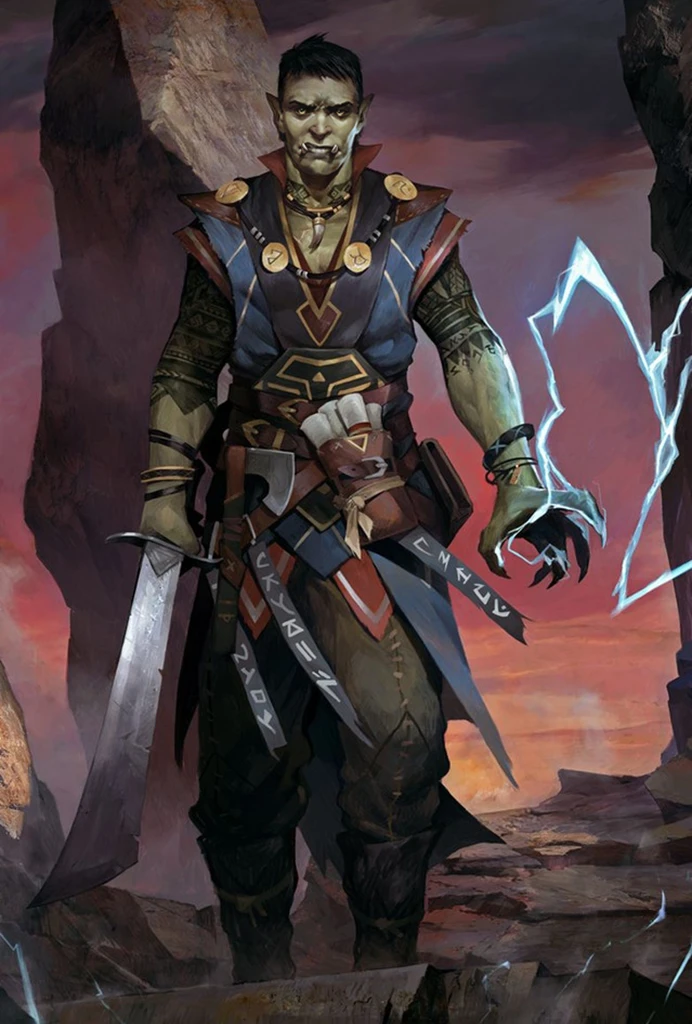
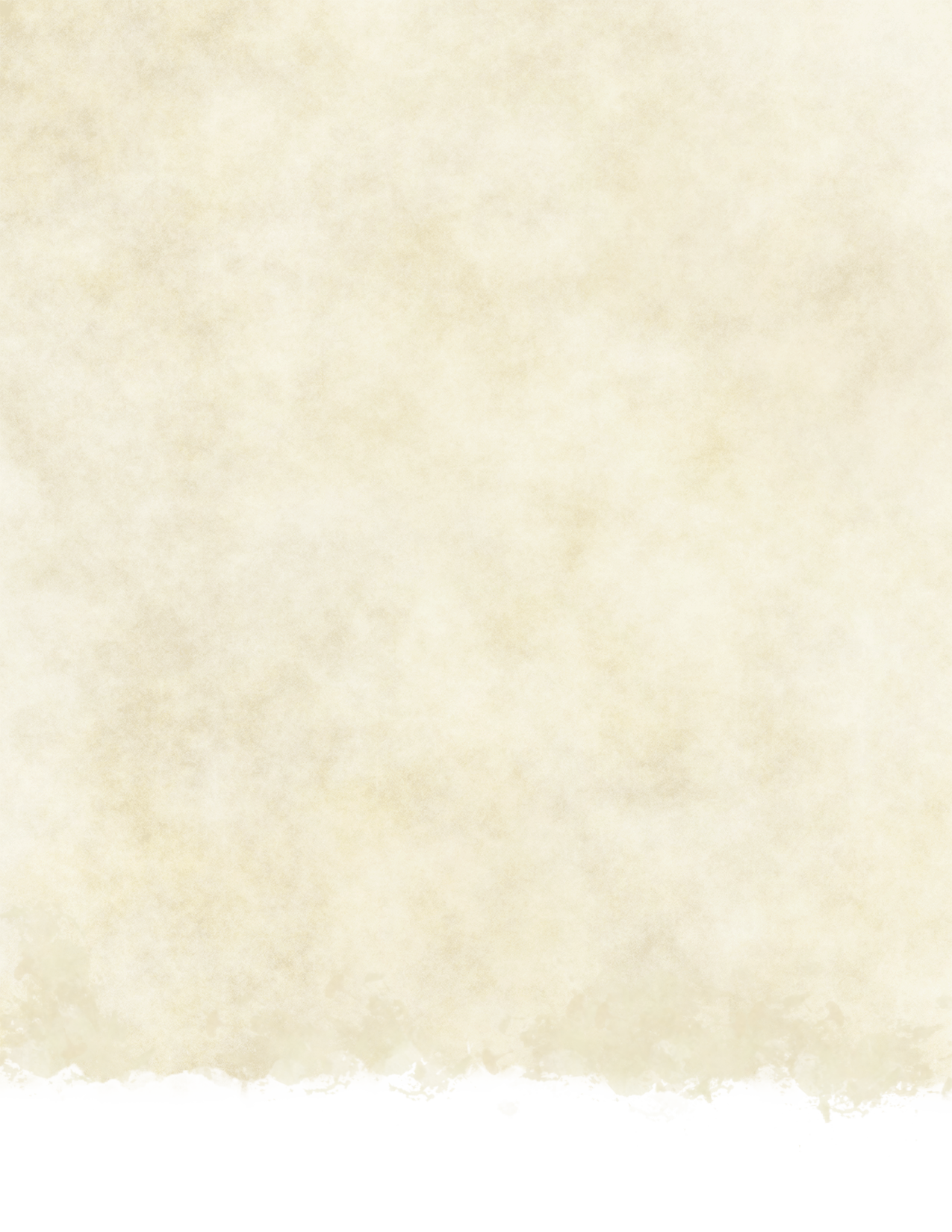

Runic Knight
The origins of this discipline can be traced back to ancient giant warrior tribes, but are now associated with goliaths, who have inherited the tradition, and to dwarves who learned it and made it their own. The Runic Knights are stalwart shieldbearers who learn magical glyphs to complement their martial abilities. Many go on treacherous expeditions to ruins deep underground to uncover ancient glyphs left by lost civilizations, bringing back knowledge to strengthen themselves and their homeland.
Discipline Spells
You gain Discipline spells at the runeblade levels listed.
Runic Knight Spells
| Runeblade Level | Spell |
|---|---|
| 3rd | armor of Agathys |
| 5th | warding bond |
| 9th | glyph of warding |
| 13th | death ward |
| 17th | circle of power |
Rune Shield
At 3rd level, you can inscribe your runes onto a shield to make it into your rune weapon. When you do, it gains the following properties when you wield it:
- It’s considered a martial melee weapon that deals d8 bludgeoning damage on a hit and has the thrown (20/60) property.
- It returns to your hand immediately after it is used to make a ranged attack.
Glyph of the Aegis
At 3rd level, your weapon gains a protective rune to help defend your allies. You regain one expended use of your Glyph of Protection feature at the beginning of each combat. When another creature you can see within 20 feet of you is hit by an attack, you can use your reaction to expend a use of your Glyph of Protection feature to add your Intelligence modifier (minimum of 1) to their AC against that attack.
When you reach 11th level in this class, you can also use this reaction to add the bonus to a target's roll when it makes a saving throw.
Glyph of the Resolute
At 7th level, you can use a bonus action on your turn to turn your rune shield’s bonus to attack and damage rolls from your Glyph of Power feature into a bonus to your AC and saving throws instead, or vice versa. If your rune weapon is a magical shield that already grants a bonus to AC, you don’t benefit from the bonus to AC from this feature.
Improved Glyph of Protection
At 15th level, you learn a glyph that channels magic into your runes, creating a resilient aura. Whenever you expend a use of your Glyph of Protection feature, you gain temporary hit points equal to your Intelligence modifier (minimum of 1). If you expend it to use your Glyph of the Aegis feature, your target gains the temporary hit points instead.
Glyph of the Ancients
At 20th level, you discover the inscription that lends you the tenacity and purpose of legendary heroes of old. You have resistance to bludgeoning, piercing, and slashing damage while holding your rune weapon.
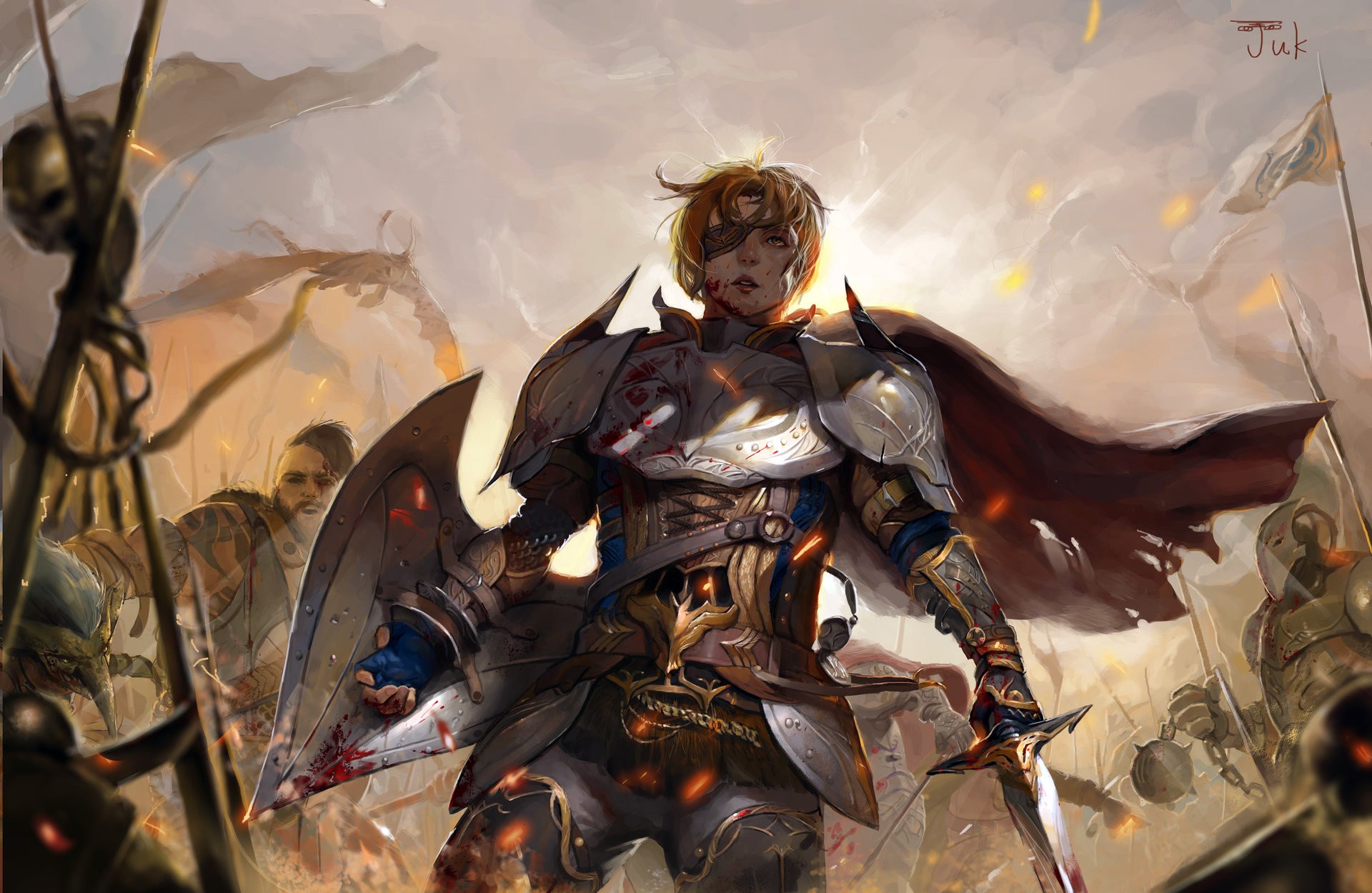


Blade Dancer
The first Blade Dancers came from the secretive tribes of Zakhara, far south of Faerûn, although the exact origins are contested. Some believe that genies granted these runes to warriors of old, while others say the gods graced those who perform worship through dance. In any case, the tradition lives on and has spread - the discipline of following the flow of battle as water does through a stream - effortless and graceful.
Discipline Spells
You gain Discipline spells at the runeblade levels listed.
Blade Dancer Spells
| Runeblade Level | Spell |
|---|---|
| 3rd | compelled duel |
| 5th | kinetic jaunt |
| 9th | Ashardalon’s stride |
| 13th | freedom of movement |
| 17th | steel wind strike |
Glyph of Revolution
At 3rd level, your weapon flows along with your strikes, deliberate and precise. Before you make a weapon attack with a rune weapon you are holding, you can morph its form into a different kind of weapon. For example, you can morph your longsword rune weapon into a longbow. The weapon retains its magical properties. The weapon stays morphed as long as you are holding it. If you morph your rune weapon into a light melee weapon, you can also create a duplicate of it in your other hand. The duplicate is a nonmagical weapon that gains the benefits of your Rune Weapon feature, and it disappears when you are no longer holding it, or your original rune weapon.
When you would make an attack that requires a specific type of weapon to do (such as using a light melee weapon to make a two-weapon fighting attack), you can’t morph your weapon into something that would disqualify it for that attack.
Whenever you morph your rune weapon, you can change the Fighting Style you chose for your Runeblade class into another one from the choices available from the feature. When you change your Fighting Style into another before an attack, it gains an additional effect for that attack, as seen on the Glyph of Revolution Effects table.
Glyph of Revolution Effects
| Fighting Style | Effect |
|---|---|
| Archery | You gain an additional +1 bonus to attack rolls you make with ranged weapons. |
| Defense | When you hit a creature with a weapon attack, you gain 2 temporary hit points. |
| Dueling | When you are wielding a melee weapon in one hand and no other weapons, you gain an additional +2 bonus to damage rolls with that weapon. |
| Great Weapon Fighting | When you hit a creature with a weapon attack using a melee weapon that you are wielding with two hands, you can push the creature up to 5 feet away from you in a straight line. The weapon must have the two-handed or versatile property for you to gain this benefit. |
| Two-Weapon Fighting | When you use a bonus action to engage in two-weapon fighting, your speed is increased by 15 feet until the end of the turn. |


Blade Dancer
At 3rd level, the sight of your mastery over weaponry is akin to a graceful performance. While holding your rune weapon, you gain a bonus to Dexterity (Acrobatics) checks and Charisma (Performance) checks equal to your Intelligence modifier (minimum of 1).
Weapon Warp
At 7th level, you can use a bonus action on your turn to throw your rune weapon at an unoccupied space you can see within 60 feet of you. You teleport to that space holding your rune weapon, and each creature of your choice within 5 feet of you must make a Constitution saving throw against your Runeblade spell save DC or take force damage equal to 1d4 + your Intelligence modifier. Once you use this feature, you can’t use it again until you finish a short or long rest, unless you expend a spell slot of any level to use it again.
Feather Step
At 15th level, your movement through the battlefield appears an ever-flowing dance. When you move on your turn, you gain a +2 bonus to your AC and Dexterity saving throws until the start of your next turn. You lose this bonus if you are prone, take damage, or if your speed becomes 0.
Dance of Hurricanes
At 20th level, you can use a bonus action on your turn to begin a war dance that lasts for one minute. While in this dance, your walking speed is doubled, and you can make an additional attack whenever you take the Attack action.
Once you use this feature, you can’t use it again until the end of a long rest, unless you expend a spell slot of any level to use it again.



Parivir
Parivir are swordsmasters, who learn runes to augment their martial skills with devastating elemental magic. Their prowess and precision with the blade is unmatched. Many an aspiring Runeblade take up this discipline, though only a select few master it.
Discipline Spells
You gain Discipline spells at the runeblade levels listed.
Parivir Spells
| Runeblade Level | Spell |
|---|---|
| 3rd | searing smite |
| 5th | branding smite |
| 9th | blinding smite |
| 13th | staggering smite |
| 17th | banishing smite |
Flair
At 3rd level, your swordsmanship allows you to gracefully finish your foes with flair.
Choose two Flair options to prepare from the Flair table below. Whenever you use an Arcane Strike with a melee weapon, you can choose to perform one of your prepared Flairs. The Flair determines the Arcane Strike’s damage type as well as its effect as detailed on the table below. Whenever you finish a short or long rest, you can change which two Flair options you have prepared. When you reach 17th level in this class, you have each option prepared at all times.

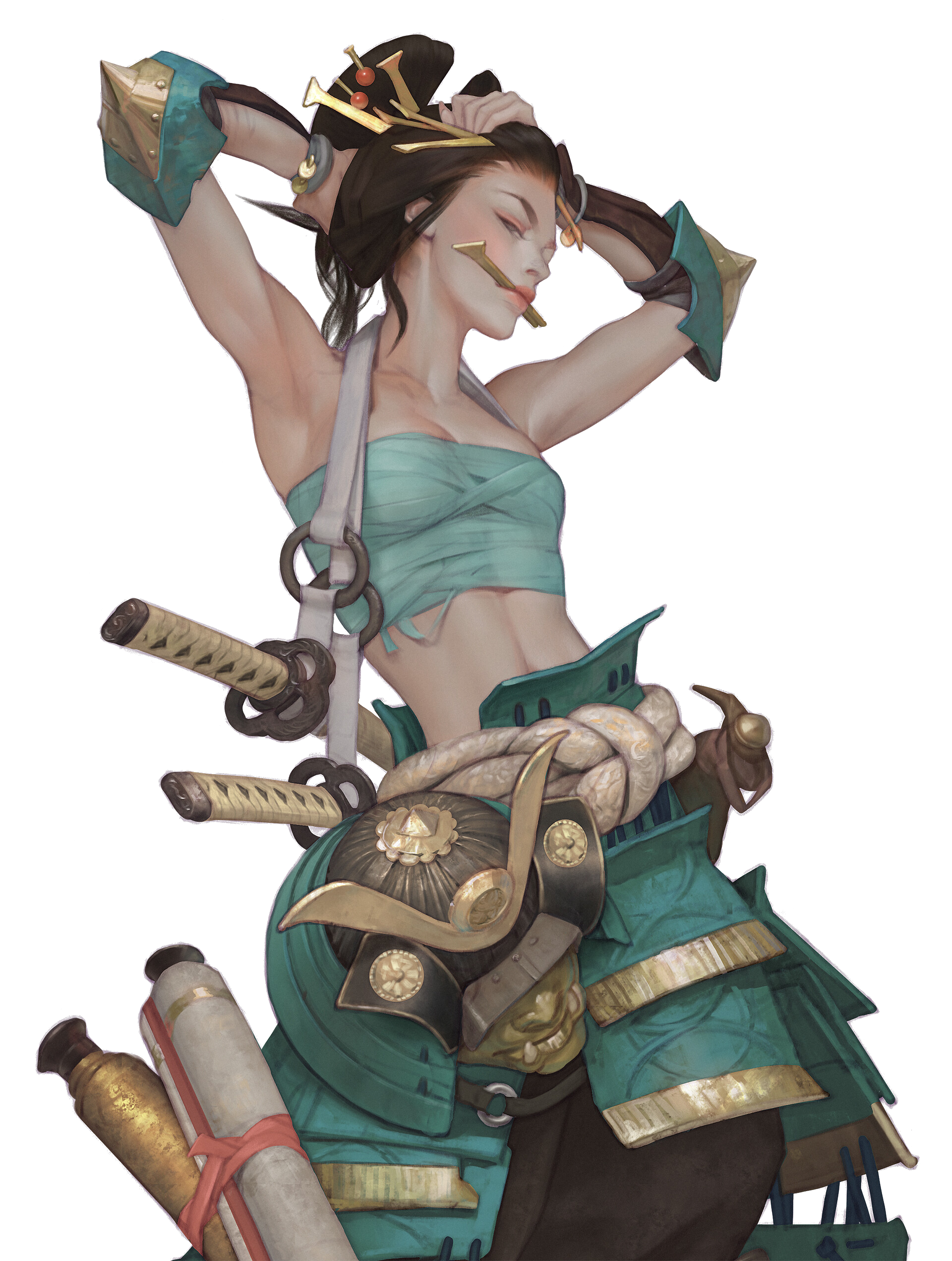
Foresight Slash
At 3rd level, when you use your Glyph of Protection against an attack to turn a hit into a miss, you can make one melee weapon attack as part of that reaction.
Wind Slash
At 7th level, you perform weapon strikes faster than the eye can see. Whenever you use an Arcane Strike with a melee weapon, the target takes an additional 1d6 magical slashing damage at the end of the turn. A target can only take this damage once per turn.
Glyph of Sacrifice
At 15th level, as an action, you can deal slashing damage to yourself equal to half your maximum hit points.
This damage can’t be prevented or reduced in any way. When you do, choose an effect:
- Unburden Soul. Each creature of your choice within 90 feet of you (other than yourself) regains 20 hit points and is cured of all effects making them poisoned, blinded, or deafened.
- Bloodlust Blade. For ten minutes, you deal additional necrotic damage with your rune weapon equal to half your level.
Lifethread Blade
At 20th level, your mastery over the blade lets you cut a life’s thread short. When you hit a creature with an attack on your turn, you can choose to doom the target for one minute. A doomed target dies whenever it has 100 hit points or fewer. Constructs and undead are immune to this effect. Once you use this feature, you can’t use it again until the end of a long rest. You also regain the use of this feature if a target immediately dies when you doom it.
Flair
| Flair | Damage Type | Effect |
|---|---|---|
| Windstrike Blade | bludgeoning | You push your target 15 feet away from you. |
| Skyfury Blade | lightning | Until the start of your next turn, the target has disadvantage on attacks against creatures other than you. |
| Hoarfrost Blade | cold | Until the start of your next turn, the target’s speed is halved. |
| Shimmering Blade | fire | Until the end of your next turn, you have advantage on your next attack against the target, unless that target can’t be blinded. |
| Addling Blade | force | Until the start of your next turn, the target is deafened and can’t take reactions. |
| Venomdrench Blade | poison | Until the end of your next turn, the target has disadvantage on the next saving throw you force it to make. |
| Bloodthirst Blade | necrotic | You gain temporary hit points equal to half the Arcane Strike damage dealt. |
Spellbow Archer
Although the martial tradition of weaving magic into archery was originally borne and perfected by elven masters, many others have begun to emulate the art. Spellbow Archers combine deadly aim and wicked magic to overwhelm their opponents from range.
Discipline Spells
You gain Discipline spells at the runeblade levels listed.
Spellbow Archer Spells
| Runeblade Level | Spell |
|---|---|
| 3rd | zephyr strike |
| 5th | cordon of arrows |
| 9th | lightning arrow |
| 13th | arcane eye |
| 17th | swift quiver |
Conjure Ammunition
At 3rd level, when you make an attack with a rune weapon that has the ammunition property, you can choose to magically conjure a piece of ammunition (such as an arrow or crossbow bolt) to use with your weapon as part of the attack. The ammunition disappears at the end of the turn or after it hits or misses.
Spell Shot
At 3rd level, you can infuse your arrows with the magic of your spells. While holding a ranged rune weapon, the range of spells you cast is equal to the spell’s normal range, or your rune weapon’s normal range, whichever is higher. The spell must not be able to target each creature within its range and cannot have a range of self.
Take a Bead
At 7th level, your strikes leave a trace of magic that lets you aim at your target with ease. Whenever you use your Arcane Strike, until the end of your next turn, you gain advantage on your next attack against that creature.
Phasing Shots
At 15th level, spells you cast while holding a ranged rune weapon and attacks you make using a ranged rune weapon ignore cover.
Glyph of Hawks
At 20th level, if your rune weapon that has the ammunition or thrown property, both its normal range and long range are doubled. Additionally, when you miss with a ranged attack using your rune weapon, you can choose to hit instead. You can use this feature a number of times equal to your Intelligence modifier (minimum of 1). You regain all expended uses at the end of a long rest.



Blade Juggler
Blade Jugglers are performers and tricksters, using their runes on knives and daggers to captivate an audience. Their deadly precision with sharpened blades is fearsome. They can juggle and throw an astounding number of blades at once, as well as mystify and confound by creating doubles of themselves.
Discipline Spells
You gain Discipline spells at the runeblade levels listed.
Blade Juggler Spells
| Runeblade Level | Spell |
|---|---|
| 3rd | hail of thorns |
| 5th | mirror image |
| 9th | conjure barrage |
| 13th | dimension door |
| 17th | conjure volley |
Glyph of the Gemini
At 3rd level, you can etch your runes onto more of your implements. You can create a second rune weapon if both your rune weapons would be light melee weapons with the thrown property. If you attempt to create a third rune weapon, your runic magics fade on all of the weapons.
You can summon your two rune weapons as a bonus action, with one weapon teleporting to each of your hands.
Arcane Juggler
At 3rd level, you can have your rune weapon teleport back to your hand immediately after being used to make a ranged weapon attack. Also, you also gain a bonus to ability checks to catch, throw, or juggle objects equal to your Intelligence modifier (minimum of 1).
Blade Cascade
At 3rd level, when you use a bonus action to engage in two-weapon fighting to make a ranged weapon attack with one of your rune weapons, you can make another ranged weapon attack with your other rune weapon in the same bonus action.
You can use this feature a number of times equal to your Intelligence modifier (minimum of 1). As a bonus action on your turn, you can expend a spell slot to regain a number of expended uses equal to the spell level expended. You also regain all expended uses at the end of a long rest.
Flash Double
At 7th level, you can use an action to either teleport 15 feet and create an illusory duplicate where you were standing, or to create an illusory duplicate in an empty space within 15 feet of you. The duplicate is an object with AC equal to your Runeblade spell save DC.
The duplicate looks and sounds like you but physical interaction with it reveals it to be an illusion, because things can pass through it.
Once on your turn, you can mentally command your duplicate to move up to 30 feet in any direction and make it gesture, speak, and behave in whatever way you choose (no action required).
The duplicate disappears when you or it take any damage, if you become incapacitated, if you dismiss it as a bonus action, if you create another duplicate, or if it is ever 30 feet away from you at the end of your turn.
A creature can use an action to make an Intelligence (Investigation) check against your spell save DC, determining the duplicate to be an illusion on a success.
As a bonus action on your turn, you can teleport, magically swapping places with the duplicate at a cost of 15 feet of your movement, regardless of the distance between the two of you.
Flechette Shower
At 15th level, you can use your action to cast the conjure barrage spell three times in the same action. You can move in between each casting. Once you use this feature, you can’t use it again until the end of a short or long rest.
When you reach 20th level in this class, you cast the spell five times in one action instead.
Flash Triple
At 20th level, your Flash Double feature gains the following improvements:
- You can make up to three duplicates instead of just one. If you attempt to make a fourth duplicate, the first one disappears. When you mentally command your duplicates to move, you move each of them separately up to 30 feet.
- Your duplicates disappear when they are 60 feet away from you at the end of your turn, instead of 30.
- You can teleport to swap places with a duplicate on your turn using 5 feet of movement, instead of 15 (no action required).




Rune Spectre
The glyphs of the Spectre are considered hidden knowledge, privy only to a select few. Kingdoms only employ a few hand selected Spectres to perform covert missions, in an attempt to keep the techniques shrouded in mystery. Those who are deemed worthy to become Spectres are trained and are taught glyphs which help them stay undetected, fight in the shadows, and gather information. Those who fail the training often become maddened by what they see.
Discipline Spells
You gain Discipline spells at the runeblade levels listed.
Spectre Spells
| Runeblade Level | Spell |
|---|---|
| 3rd | disguise self |
| 5th | pass without trace |
| 9th | major image |
| 13th | greater invisibility |
| 17th | passwall |
Glyph of the Poltergeist
At 3rd level, the ghastly rune you imprint on your weapon also imprints onto your soul. While holding your rune weapon, you can make it invisible as a bonus action on your turn. While your weapon is invisible, ammunition it uses also become invisible until it either hits or misses. The first weapon attack you make against a creature that can see you but not your invisible rune weapon gains advantage. You can gain advantage against the same creature again using this feature after 24 hours.
You can end the invisibility at any time (no action required). It ends early when you become incapacitated, or when you die.
Spectre Training
At 3rd level, you benefit from extensive training in covert operations. You gain proficiency in thieves’ tools and the Stealth skill. Your proficiency bonus is doubled for any ability check you make that uses either of those proficiencies.
Spectre’s Ambush
At 7th level, at home unseen in the shadows, you learn to take advantage of an opponent's defenselessness. Weapon attacks you make with advantage or against surprised creatures deal an additional 1d6 damage of the weapon’s type.
Ghastly Reconnaissance
At 15th level, the deathly magic of your runes binds your soul closer to the realm of the dead. You are always under the effects of a see invisibility spell, and you can cast the speak with dead spell at will.
Glyph of the Phantom
At 20th level, your soul is forever altered by your spectral runes and is now indistinguishable from the dead - even to the barrier between worlds. While holding your rune weapon, you can cast the etherealness spell at will without using a spell slot or requiring a verbal component. The spell ends early if you end it as a bonus action on your turn, are no longer carrying your rune weapon, fall unconscious, or die.




Spectral Soulblade
Soulblades are mystic warriors who harness the magic of weapons into spectral blades that can slash through enemies with uncanny precision, or devastating waves of pure energy with a slash. Soulblades are both formidable and enigmatic, seamlessly blending the material and spectral realms to deliver swift and deadly strikes, leaving foes bewildered and awestruck by their spectral prowess.
Discipline Spells
You gain Discipline spells at the runeblade levels listed.
Soulblade Spells
| Runeblade Level | Spell |
|---|---|
| 3rd | zephyr strike |
| 5th | cloud of daggers |
| 9th | conjure barrage |
| 13th | shadow of moil |
| 17th | steel wind strike |
Spectral Blades
At 3rd level, you can conjure magical spectral copies of your rune weapon that shoot out towards your targets like spears. You can make ranged attacks with a melee rune weapon, out to a range of 30 feet. This attack uses the same ability modifier as a melee attack for its attack roll and damage roll. The weapon's damage die for this attack is a d4, and the attack deals force damage.
Cross Slash
At 3rd level, when you use the Attack action, you can make one melee weapon attack using your rune weapon as a bonus action. You can use this feature a number of times equal to your Intelligence modifier (a minimum of once).
As a bonus action on your turn, you can expend a spell slot to regain a number of expended uses equal to the spell level expended. You also regain all expended uses at the end of a long rest.
Blade Beam
At 7th level, once on each of your turns when you take the Attack action, you can spend a spell slot and forego one of your attacks to instead send out a beam of energy with a swing of your weapon. The beam travels in a 30-foot-long and 5-foot-wide line originating from you, in a direction you choose. Each creature in the line must make a Dexterity saving throw against your Runeblade spell save DC. A creature takes 3d6 force damage on a failed save. When you spend a spell slot of 2nd level or higher, the damage increases by 1d6, and the line’s length increases by 10 feet for each slot level above 1st.
Aura of Blades
At 15th level, you can use an action to summon magical blades in a 15-foot radius sphere centered on you for one minute. You can choose to dismiss the aura at any time (no action required). When another creature enters the area for the first time on a turn or starts its turn there, you can force it to make a Dexterity saving throw against your Runeblade spell save DC. On a failed save, the creature takes slashing damage equal to your Intelligence modifier (minimum of 1). On a successful save, the creature takes half as much damage.
Sword Storm
At 20th level, you can use your action to cast the blade barrier spell three times. When cast using this feature, the spell does not require concentration, you are immune to the spell’s effects, and you can end each spell at any time (no action required). Until the spell ends, you use a bonus action on your turn to disperse one of the walls and reform it at another point within 90 feet of you.
Once you use this feature, you can’t use it again until the end of a long rest.


Witchblade
Witchblades wield dark and malevolent magic to afflict their adversaries. With their cursed blades, they can siphon the life force from their foes, leaving them weakened and vulnerable. These formidable spellcasters combine their proficiency with runic weaponry and arcane curses to unleash a deadly blend of martial and mystical prowess, instilling fear in those who dare to cross their path while harnessing the power of darkness to ensure their dominance on the battlefield.
Discipline Spells
You gain Discipline spells at the runeblade levels listed.
Witchblade Spells
| Runeblade Level | Spell |
|---|---|
| 3rd | bane |
| 5th | blindness/deafness |
| 9th | bestow curse |
| 13th | blight |
| 17th | contagion |
Cursemark Glyph
At 3rd level, you can use a bonus action to curse a creature you can see within 30 feet of you, manifesting on it as a glyph, symbol, or mark. The target is cursed for 1 minute. The curse ends early if you curse another target, the target dies, you die, or you are incapacitated.
A target cursed by this feature doesn’t benefit from invisibility against you and can’t be hidden from you. If the cursed target dies, you can recover an expended 1st level spell slot, as your curse drains its vanishing vitality. You can recover spell slots using this feature a number of times equal to your Intelligence modifier (minimum of once).
Baneful Blade
At 3rd level, when you use an Arcane Strike, the target has disadvantage on the next saving throw you force it to make until the end of your next turn.
Awakened Malediction
At 7th level, you can add 1d4 to your attack rolls against targets cursed by your Cursemark Glyph.
Once per long rest, you can recover a spell slot of any level when a target cursed by your Cursemark Glyph dies.
Voodoo Armor
At 15th level, when you take damage while a target is cursed by your Cursemark Glyph, you can choose to prevent 2d4 of that damage and the cursed target takes that much necrotic damage.
Glyph of the Familiar
At 20th level, you can conduct a ten-minute ritual to summon a dark creature curse-bound to your bidding. The ritual can be done during a short or long rest, being completed at the end of the rest. At the end of the ritual, you cast one of the following spells* at 9th level without needing material components: summon shadowspawn, summon undead, or summon fiend. The spell does not require concentration, and its duration is until the end of your next long rest.
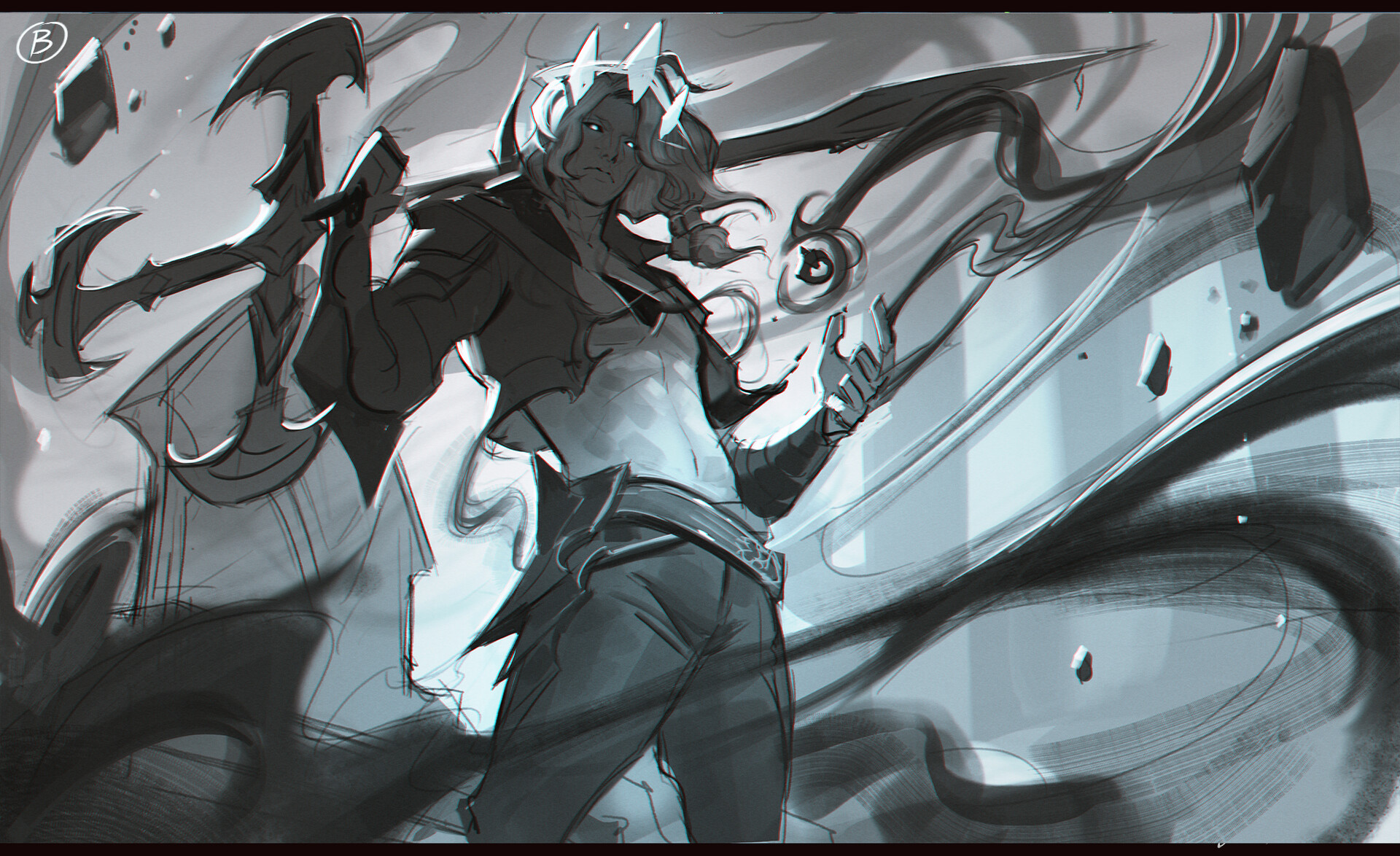

Runeblade Spell List
Cantrips (0 Level)
- blade ward
- booming blade
- fire bolt
- frostbite
- green-flame blade
- lightning lure
- mind sliver
- primal savagery
- ray of frost
- resistance
- sapping sting
- shocking grasp
- sword burst
- thorn whip
- thunderclap
- true strike
1st Level
- absorb elements
- armor of agathys
- command
- compelled duel
- detect magic
- divine favor
- expeditious retreat
- hail of thorns
- heroism
- identify
- jump
- longstrider
- mage armor
- searing smite
- shield
- shield of faith
- thunderous smite
- wrathful smite
- zephyr strike
2nd Level
- aid
- barkskin
- blur
- branding smite
- earthbind
- enhance ability
- find traps
- flame blade
- kinetic jaunt
- magic weapon
- misty step
- shadow blade
- warding bond
- warding wind
3rd Level
- Ashardalon's stride
- blinding smite
- blink
- catnap
- conjure barrage
- dispel magic
- elemental weapon
- fireball
- flame arrows
- glyph of warding
- haste
- lightning bolt
- magic circle
- protection from energy
- pulse wave
- thunder step
4th Level
- dimension door
- elemental bane
- fire shield
- freedom of movement
- shadow of moil
- staggering smite
- stoneskin
5th Level
- banishing smite
- conjure volley
- far step
- holy weapon
- skill empowerment
- steel wind strike
- teleportation circle
Multiclassing
- Ability Score Minimum: Strength or Dexterity 13, Intelligence 13
- Proficiencies Gained: Light armor, medium armor, shields, simple weapons, martial weapons
Sage Advice
-
Does Improved Glyph of Protection grant you temporary hit points before the damage? Yes, since you gain the temporary hit points at the same time as when your AC or saving throw is increased, before any of the effects of the attack or saving throw are applied.
-
Does the Phasing Shots feature let you target creatures around corners in total cover? Yes, although it is important to note that if you're attacking a creature behind opaque total cover, the disadvantage from your target being unseen still applies. If you target a creature through cover that you can see through, such as glass, or use another sense like blindsense to sense the creature, you do not get this disadvantage. Also important to note that this feature still does not let you target a creature that is hidden from you (as opposed to unseen by you).
-
Does the Phasing Shots feature let you target creatures behind a wall of force or forcecage spell? You cannot target through these spells, as your ammunition or spell still needs to physically pass through the barrier, but is prevented as per the spell descriptions. The feature just lets you ignore cover. This feature does let you target creatures through invisible walls that are not conjured by those spells.
-
Does the Glyph of Power bonus apply to both rune weapons gained through the Glyph of the Gemini feature? Yes, they are both considered as your rune weapon and both get the bonus.
-
How does the Blade Juggler's Flash Double duplicate work and take damage? Your illusory duplicate is an object. Objects are immune to poison and psychic damage. Objects automatically fail Strength and Dexterity saving throws, and they are immune to effects that require other saves. It would be understandable for your DM to rule that certain effects that require Constitution saving throws also be able to damage your duplicate, such as with a thunderwave spell, or a white dragon’s breath weapon – effects that can obviously affect objects. If your duplicate is targeted by a spell or effect that it would be immune to, the spell slot or resource used is still expended, and the duplicate appears to be unaffected, appearing to have succeeded on the save if the spell or effect would have no effect on a success (XGE, p. 85).
-
How does the Blade Dancer's Glyph of Revolution work? The Fighting Style bonus only applies if you change your Fighting Style for that attack, and the bonus applies only to that one attack. For example, you make an attack and change your longsword/Dueling loadout to a longbow/Archery loadout and gain a +3 total bonus to attack rolls with your longbow from the Archery Fighting Style. Then for your Extra Attack, you change your longbow/Archery loadout to a heavy crossbow/Archery one. You don’t gain the +1 to attack from Glyph of Revolution since you did not change your Fighting Style, and your Archery bonus is only +2 as normal.
-
Also, the intention is you can’t morph it when you do bonus action attacks (such as from feats like Polearm Master, Crossbow Expert, or when you use a double-bladed scimitar) to bypass their limitations. Great Weapon Master’s bonus action attack should still work, if you do a melee attack with any other weapon.
-
When you use Sword Storm, does the damage from the three blade barriers stack? Purely RAW, a target can only be damaged by one instance of the blade barrier spell per turn, even if the areas do not overlap – even if the spells are 100 feet away from each other. This also applies to multiple casts of other ongoing AOE spells such as spirit guardians or moonbeam.
-
In the games I run, I rule this differently. I personally don’t count instantaneous damage from an AOE (as opposed to an ongoing debuff that deals damage, like when you are burning or poisoned) as a spell effect or game feature covered by the rule. If someone runs straight ahead into three different blade barriers parallel to each other, they should take three instances of damage.
-
Overlapping AOE’s should also deal multiple instances of damage. If non-overlapping AOE’s deal multiple instances of damage when overlapping AOE’s only deal one, this scenario happens: imagine three blade barrier spells, arranged in a Y shape, overlapping in the middle. If spell damage doesn’t stack in overlapping AOE’s, a creature can start in the middle where all spells overlap, take one instance of damage from the three spells, then go out and move in a circle, entering and exiting each arm of the Y shape without taking any more damage. A creature that doesn’t start in the middle but moves in the same circle would take three instances of damage from the spells.
-
Ask your DM to find out how they rule these scenarios.
Art Credits
Listed in order of appearance. If you are the artist and want your art to be removed from the live version of this document, simply contact me! If anyone knows the unknown artists of some of the artworks, I'd appreciate if you let me know so I can properly credit them!
- Pathfinder: Kingmaker Regongar Concept Art Mod (artist unknown)
- War by C Juk
- Double Sword Dancer Illust by Jimin Kim (artist presence is gone online)
- Blade Dancer by madspartan013
- Samurai Girl by Christophe Young
- Ashe Legends of Runeterra artwork (artist unknown)
- Jester - by MuYoung Kim
- Dark Souls 3 Yuria of Londor by hannah Ji / Jdori
- Divine Sword Irelia by 深圳枭瞳
- RuneKing Viego by Chengwei Pan
Feedback Requested! (v0.10.0)
This is a draft, and requires more playtesting, so feedback would be very much appreciated, especially from actual play. Contact me at /u/regularabsentee for any questions/feedback.
Changes from v0.9.1
- Removed Shadow Puppetmaster subclass.
- This felt like a departure from the Runebladeclass's identity.
- Added the Soulblade and Witchblade subclasses.
- Changed the Blade Dancer's 20th level feature Glyph of Hurricanes to Dance of Hurricanes.
Changes from v0.9
- The Runic Knight's Glyph of the Aegis feature was modified. Instead of adding half your Int mod to an ally's AC or save, it now adds your full Int mod only for attacks, until 11th level.
- The Parivir's Wind Slash damage can now only be applied once per turn.
Changes from v0.8
- Reworked the Blade Dancer and Runic Knight subclasses, as well as added the Parivir, Blade Juggler, and the Shadow Puppeteer subclasses!